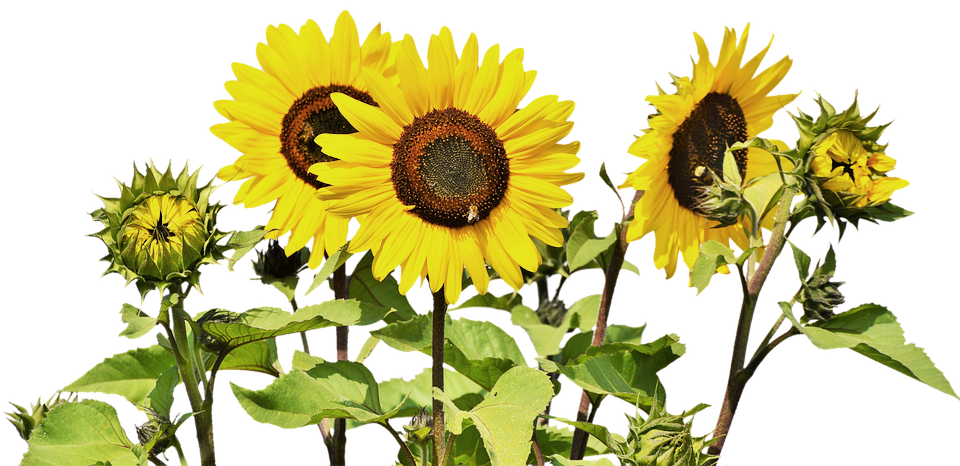
Vegetable Gardening 101
By Kaw Valley Greenhouse
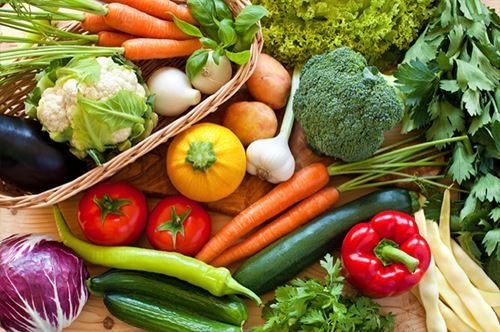
First and foremost, grow vegetables that you like. Chances are, if you are going to enjoy eating it then you will also enjoy growing it. As you get a grasp on the fundamentals of vegetable gardening, you will probably want to add more types of vegetables, herbs, and fruits in following years. Planting a variety of different veggies can be overwhelming if you are new to growing, but it can also be a type of insurance policy. For example, if an insect comes through and wipes out all your lettuces, you may still have spinach to harvest. That being said, when starting out it is a good idea to try a few different crops but keep the overall garden a manageable size. Start with an area you will visit frequently at least 3 times a week, that also gets a lot of sun.
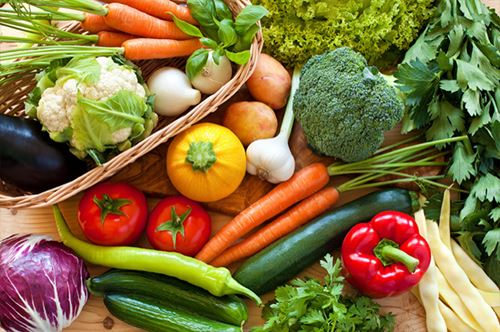
Knowing When to Plant
Vegetable plants can be split into three categories based upon what temperatures they tolerate. Understanding these categories can help determine when to plant your crops.
Hardy describes plants that are able to withstand frosts. Usually speaking this is temperatures as low as 20°F. They are usually able to be planted as soon as the ground can be worked, if temperature fall below 20°F then have a cloth ready to cover your plants for extra insulation. Plants include: Cabbage, Brussels sprouts, turnips, lettuces, and kale.
Half-Hardy plants are not as tolerant of frosts but are perfectly happy in consistently cold weather, temperatures around 33°F - 45°F. These can typically be planted outdoors a few weeks before the average last frost date for your area. Plants include: Beets, potatoes, peas, and carrots.
Tender crops are those that are more heat loving and suffer if temperatures are lower than 45°F for a significant amount of time. These include things like: Beans, cucumbers, eggplant, squash, tomatoes, sweet potato, peppers, melons and okra.
Keep in mind, young newly transplanted crops are less tolerant of being out of their optimum growing temperatures than mature plants. Keep an eye on them and protect them with a bed sheet if temperatures fall too low.
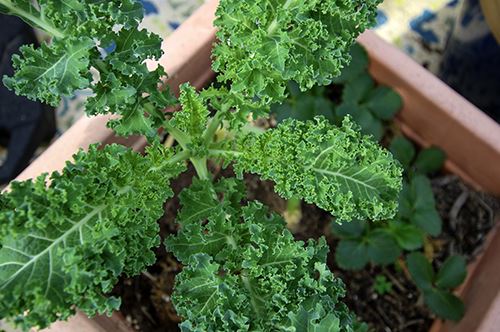
Importance of Rotating Crops
Knowing what plants are related to one another means that you will better understand what they need to flourish. Most vegetables that are in the same family can be treated similarly when it comes to soil and water preferences and nutrient needs. Considering plant families is also important to be proactive in protecting your plants from pests and diseases, as plant families tend to share the same problems. Rotating the locations of crop families is a simple way to prevent pests and diseases from occurring in the same place year after year. If you are low on space, many veggies can be grown in containers which are easier to move to different areas.
|
Family Name |
Crops |
Notable characteristics |
|
Brassicaceae or Brassicas |
Broccoli, Brussels Sprouts, Collards, Cabbage, Cauliflower, Kale, Radish, Turnips |
The most frost tolerant |
|
Solanaceae or Nightshades |
Tomatoes, Peppers, Eggplant, Potatoes |
Most are heat lovers; Potatoes are cold hardy |
|
Alliaceae or Alliums |
Onions, Chives, Garlic, Leeks |
Few pests; cold hardy. Don’t like competition with weeds. |
|
Fabaceae or Legumes |
Beans, Peas |
Peas are half-hardy, beans tender. This family naturally adds nitrogen to the soil! |
|
Apiaceae or Umbels |
Carrots, Celery, Parsley, Dill, Fennel, Cilantro |
Most are half hardy with the exception of Dill. Flowers attract beneficial insects. |
|
Cucurbitaceae or cucurbits |
Cucumbers, Melons, Summer and Winter Squash, Zucchini, Pumpkins |
Tender plants; Winter squash are planted in late spring but harvested in fall (winter storage) |
|
Amaranthaceae |
Spinach, Beets, Swiss Chard |
Spinach is hardy; others half hardy |
Soil Basics
It all starts in the soil. Having a healthy soil is the key to plant health. In general vegetable gardens will need fertile soil with good drainage. If your soil is poor, rocky or compacted, you can compensate by growing in containers or by building a raised bed. When plants are stressed, they are more susceptible to disease and pest issues. Fertilizer does not make a soil heathy, organic matter does though. If fertilizer is applied but not needed, then the excess can stress plants more than they would be otherwise.
Feeding your Veggies
Fertilizer needs are going to vary by the crop and depend on the type of soil you are working with. You may need to do some extra informational digging and checking the website of your local extension office is a great place to start. Fertilizers are labeled with a three-number system that symbolizes the amount of macronutrients they contain. N-P-K stands for Nitrogen-Phosphorous-Potassium.
When plants are young, they will also require more nitrogen fertilizer in order to grow leaves and strong stems. Phosphorus is a nutrient that is important when plants are flowering so that they grow full fruits. Many garden soils in our area have enough phosphorus especially if they have been fertilized with all-purpose (even numbers) fertilizers.
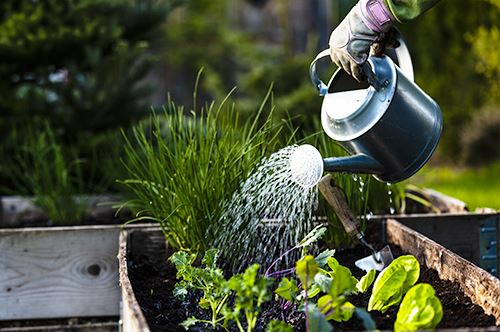
Watering Basics
Vegetable crops need reliable water throughout the season. Plants uptake water constantly but the amount that they need depends on a few factors. When the weather is hot or windy plants lose moisture faster than in mild or humid conditions. The size of the plant is also a factor, as it grows it will require more water. This does relate to another factor, the size and depth of the root system. Of course, you can’t exactly measure this, but it is something to keep in mind. Young plants have more shallow roots and tend to dry out as soil moisture evaporates. Larger plants will have deeper roots that can mine water from deeper in the soil. Therefore, when plants are older you will want to water for longer (so that it penetrates more deeply) and can get away with doing it less frequently than you would when they are young and have shallow roots. Plants placed in pots will dry out more frequently than those in the ground. Your soil type is also a factor as soils will drain differently depending on the size of the particles and the amount of organic matter present. Using mulch helps prevent evaporation, retaining more moisture, and adds to the organic material present in the soil.
Unfortunately, there is no magic number for how much water plants need, because the factors mentioned will vary through the season. However, most vegetables will be happy with approximately an inch or two of rain in a week. Too much watering can be a cause for many plant diseases and rot issues. It is good to be sure your plants are allowed to dry a little between watering. When in doubt feel the soil; if it is dry to the touch an inch or so down you are probably okay to water. It is more efficient to water in the mornings so that plants are well hydrated before the hottest part of the day. If you must water late in the day try not to water the leaves if there isn’t enough time for the leaves to dry out. Water droplets left on the leaf tissue for too long can be a major point of entry for some pathogens, especially fungi. For flowers or vegetables, applying water directly to the soil avoiding foliage as much as possible, helps reduce fungal disease which is especially important for tomato plants.
Sun Exposure
Sun is important for photosynthesis, allowing your plant to yield the most food for you. Generally vegetable crops are going to want full sun (6 or more hours) in order to thrive. When possible place your edible garden in the sunniest spot you can. Some crops are tolerant of shade, however. Many leafy greens are tolerant of part shade to part sun (4-6 hours of sun). For example, lettuces are cool season crops that tend to go to seed in heat, thus completing their life cycle. placing these in a spot that is shaded from the hot afternoon sun actually helps them live longer. Cucumbers are also good at tolerating part sun, though they will not yield quite as much. Some culinary herbs also tolerate shade like cilantro, mint and parsley.
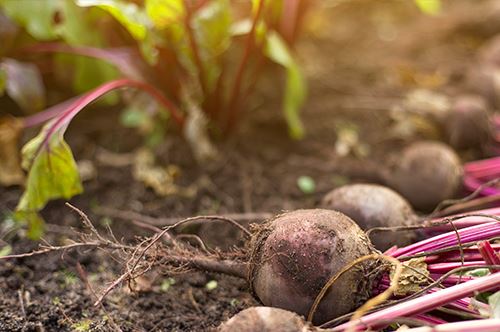
Planting tips
Transplanting may seem daunting but keep these tips in mind and your plants will be happy to stretch their roots!
-
If the plants are wilting, water them first and wait until they perk up
-
Keep roots from being overly disturbed; squeeze nursery pot to dislodge root ball
-
Plant at the same depth as it was in its nursery pot (tomatoes can be buried deeper)
-
Direct seed root crops with spacing in mind (such as beets, radishes, and carrots: see seed packet) *thinning is essential for roots to have room to grow, and can be tedious if sown too closely to begin with
-
Think of how large the mature plant will be when placing crops together; They need adequate room to grow (use the spacing on the tag)
-
Water thoroughly immediately after planting
Now that you have more understanding of the needs of common vegetables, head on down to one of our garden centers to pick out your favorite variety of crops you want to grow.

